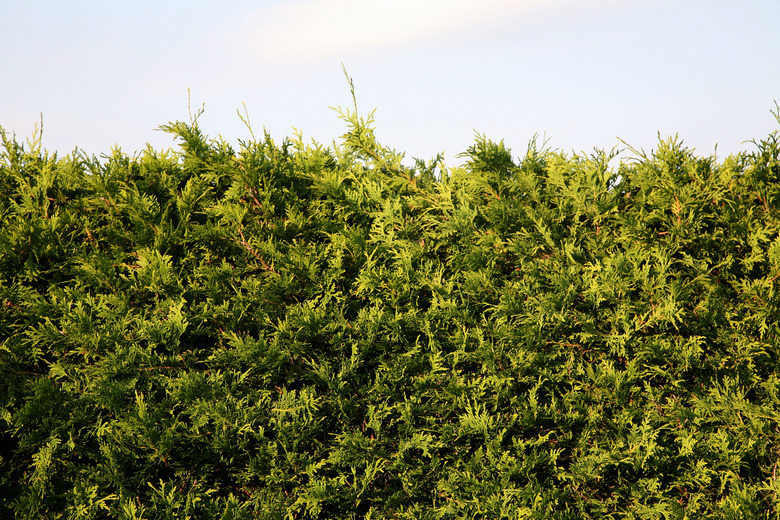How To Transplant A Cedar Tree
Often grown as a hedge, eastern red cedar (Juniperus virginiana) also makes an attractive tree, growing as tall as 60 feet if not pruned back. Hardy to U.S. Department of Agriculture plant hardiness zones 3 to 9, this tree can be grown easily in many different environments, and will thrive with little care in most gardens. Cedar trees can also be transplanted successfully as long as a few basic requirements are met.
Step 1
Step 1
Prepare a hole where the cedar tree is to be transplanted. Dig a hole twice as wide as the root ball of the cedar. If the cedar is being transplanted into the same kind of topsoil, then dig a hole as deep as the root ball, and plant it at the same depth. If the cedar is being planted into heavier soil, such as clay, dig a hole 1 or 2 inches less deep and plant the cedar at a slightly higher level than it was previous planted.
- Often grown as a hedge, eastern red cedar (Juniperus virginiana) also makes an attractive tree, growing as tall as 60 feet if not pruned back.
- If the cedar is being planted into heavier soil, such as clay, dig a hole 1 or 2 inches less deep and plant the cedar at a slightly higher level than it was previous planted.
Step 2
Step 2
Using a spade, dig a 10- to 15-inch radius around the trunk of the cedar to be transplanted. Dig down and around the root ball of the cedar using a shovel. Dig around 10 inches deep and lift the root ball out of the ground. Bring the cedar tree over to the new location for planting using a wheelbarrow or cart
Step 3
Step 3
Scatter two handfuls of bone meal around the bottom of the hole. Place the root ball of the tree into the hole and shovel the soil back around the root ball of the tree. Adjust the tree so that it is standing straight and not at an angle as the soil is packed down around the sides of the roots. Pat the soil down until it is level with the surrounding ground and firm.
- Using a spade, dig a 10- to 15-inch radius around the trunk of the cedar to be transplanted.
- Dig around 10 inches deep and lift the root ball out of the ground.
Step 4
Step 4
Water the soil around the cedar tree until it is thoroughly soaked. Water the cedar tree once a day after planting until the soil is thoroughly moist. If planting in the fall, stop watering after the first frost. If planting in the spring, continue watering every day throughout the spring and summer until the first frost.
Tip
It is best to transplant cedars in the fall, since this will allow the tree a long period to recover from transplant shock and to establish the root system before summer. Cedar trees can also be transplanted in the spring as long as they are watered daily through the spring and summer months. They should never be transplanted during the summer, as the heat of the growing season will make it very difficult to recover after being transplanted.
Things Needed
- Shovel
- Spade
- Wheelbarrow or cart
- Bone meal
- Hose
